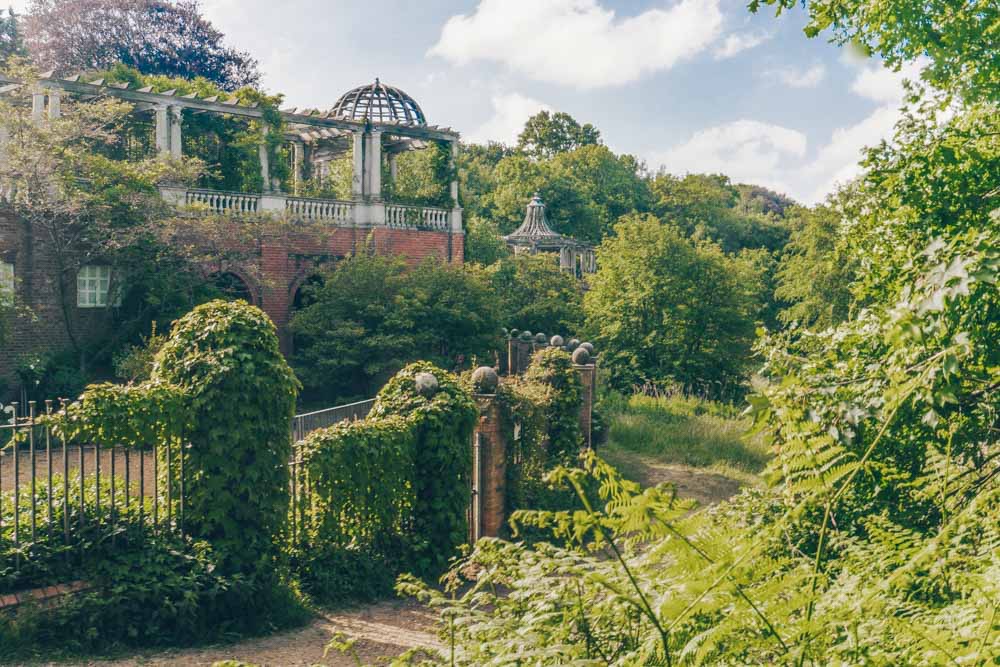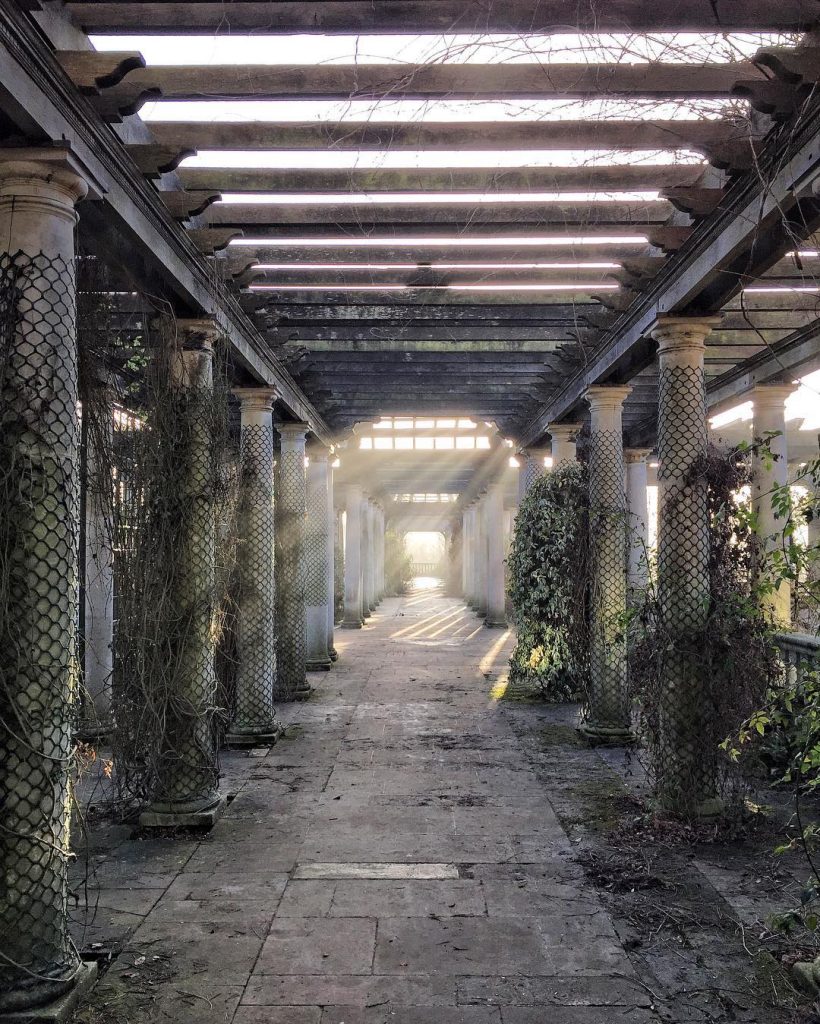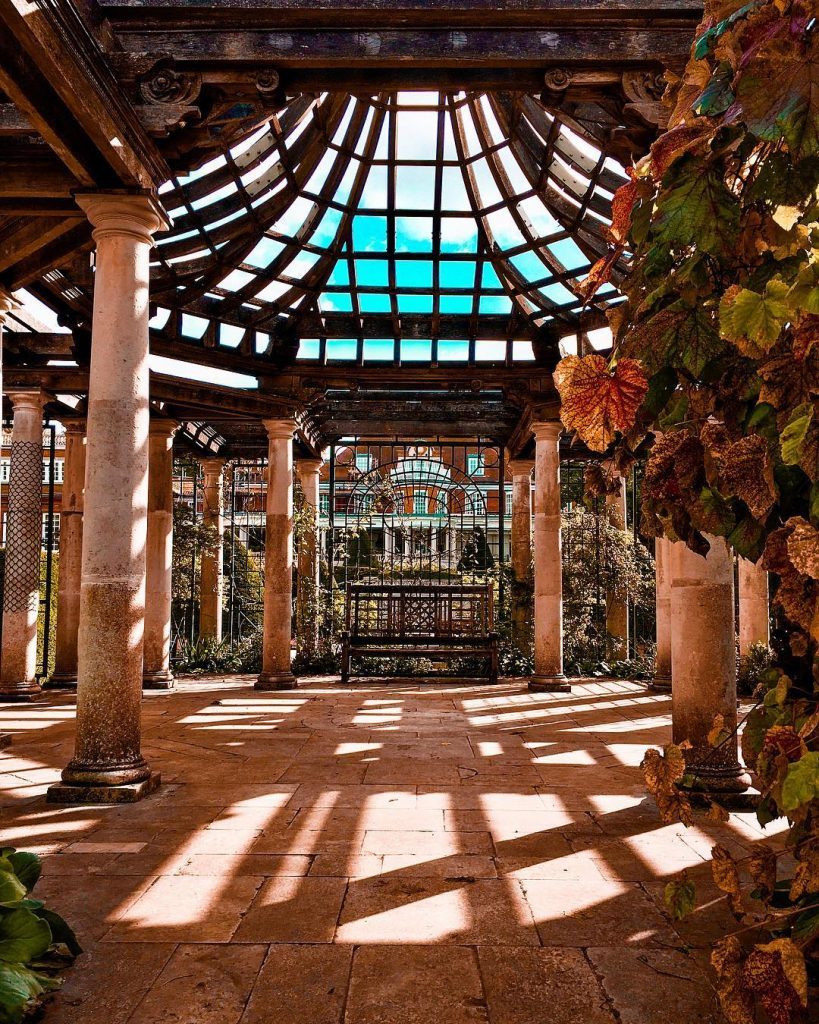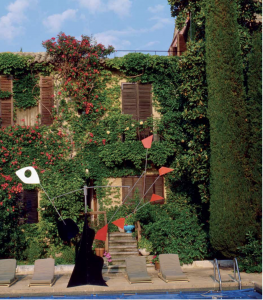Contemplating a former life of opulence in Hampstead Heath

The Pergola and its gardens reside on the Western periphery of Hampstead Heath. Roses and hydrangea clamber up the arbour of the previously ornate Edwardian structure, their plunging purples and blushing pinks embellishing the grey ruins. Engulfed by wildlife, it stands tall, stark and resilient, a battalion refusing to succumb to natural forces.
The Pergola is a poignant monument, rendered an emblem of decadence. Its previous life began when it was constructed in the early twentieth-century, commissioned by the aristocratic Lord Leverhulme, who had purchased a house nearby called “The Hill.” Boasting his Edwardian finery, the Lord commanded the Pergola to be built for the hosting of his elaborate dinner parties, as well as a space for his family to bathe in the golden light of the setting Summer sun.

Today, the Pergola is an empty vessel, a skeleton of former opulence. Benches line the terrace walkway and situated between the vine-choked pillars, each seat provides a differing view of the serene landscape. Carved within each bench is an individual memorial. Placed in the centre of where the two walkways collide, the bench I often frequent is inscribed with the words:
In Memory of our daddy, Anthony Glints (1961 – 2007)
We loved to walk here to our secret garden
Forever in our hearts
‘Yahayshamahay’ Lara, Chloe and Maya

The daughters’ coining of the Pergola as a secret garden perfectly captures its intimacy. For many, it is a hidden occupation or love affair for those who have stumbled upon it. The Heath’s Pergola is a life once lived in grandeur, one that refuses to disappear.




